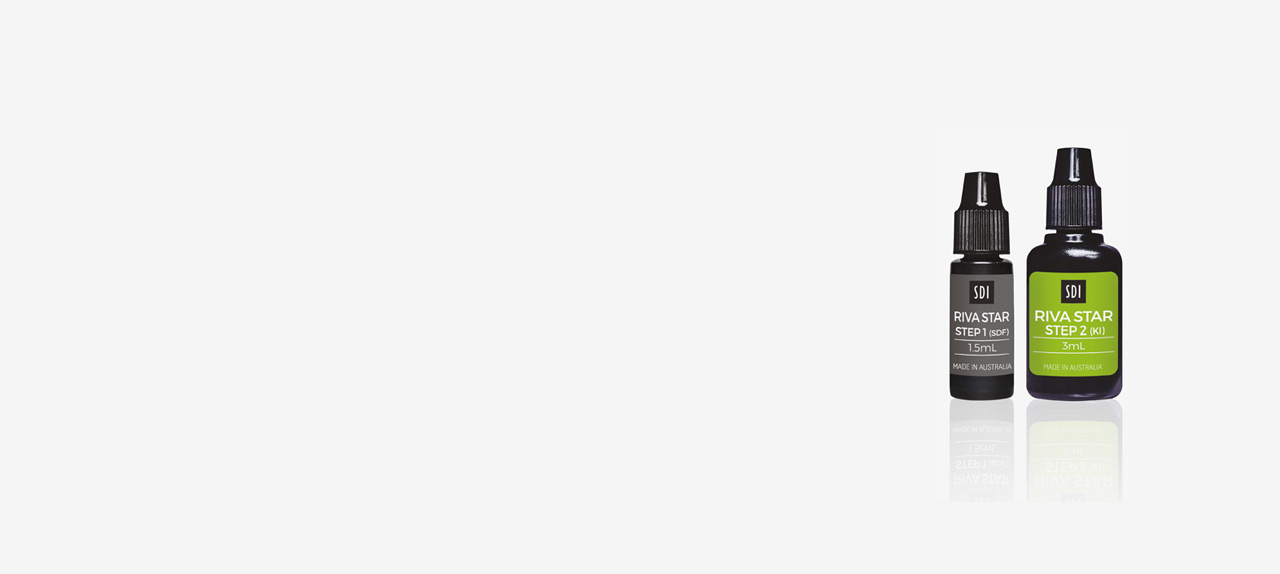There’s been much discussion so far this year about the role that SDF can play in the minimally invasive treatment of caries, in addition to its current indication in the UK and Europe for the reduction of hypersensitivity.
What is SDF?
Silver Diamine Fluoride (SDF) is a formulation which contains silver and fluoride stabilised in ammonia. As paediatric dentist, Laura Timms reports, clinical trials show that:
- SDF relieves sensitivity by blocking the dentinal tubules.
- The fluoride promotes remineralisation and makes the dentine less susceptible to acid dissolution.
- The dentine retains 2-3 times more fluoride than when sodium fluoride varnish is used.
- The silver has bactericidal properties which interfere with bacterial metabolism and inhibit biofilm formation.
- SDF also inhibits the action of matrix metallo-proteinases that break down collagen.
In the last year, the case for SDF has strengthened even further as it is a topical treatment applied without the need for aerosol-generating procedures.
A starring role
One disadvantage with the use of SDF on its own is the dark staining caused by free/unreacted silver forming silver sulphides, which can be particularly noticeable on anterior teeth.
Dentist Andrew Osafo uses Riva Star which combines SDF with potassium iodide to minimise the risk of staining. Riva Star has a patented two-step procedure which directs the immediate application of potassium iodide over the silver fluoride. The two react to form a silver precipitate which turns clear and reduces the chances of discolouration.
In his article in Dentistry (March 2021), Andrew attests that using Riva Star allows him to be more conservative, deliver more aesthetic results and in many cases, avoid having to use a local anaesthetic. He comments:
“SDF is a non-invasive, non-aerosol-generating procedure, reducing risk to patients and staff, and with the right training is easy to use. It’s ideal for cost-effective emergency care to stabilise problem areas and hypersensitivity until the patient can be recalled at a later date for follow-up treatment.”
In his ‘SMART’ protocol, dentist Geoff Knight follows Riva Star with the application of a glass ionomer cement (GIC), finding that it forms a decay-resistant base for direct restoration. He also finds that the time required to triage teeth with Riva Star and GIC is a fraction of the time required on a conventionally restored tooth, especially as the tooth doesn’t require anaesthetic.
Systematic reviews in dental literature confirm that a single surface cavity restored in this way may be considered to have a similar life expectancy as an amalgam or composite resin restoration.
Join the discussion
Andrew Osafo talks compellingly about why he advocates the use of SDF and Riva Star for the treatment of caries in our latest SDI podcast. He is also running a series of webinars in with Professor Raman Bedi, which includes a hands-on element and covers everything from caries arrest and interim repair to definitive restorations.
As the need to reduce AGPs in dental procedures remains paramount and the case for minimally invasive dentistry becomes ever stronger, treatment protocols using SDF and Riva Star to arrest caries may be just what the dentist ordered…!
Try Riva Star now by contacting your local SDI representative.





